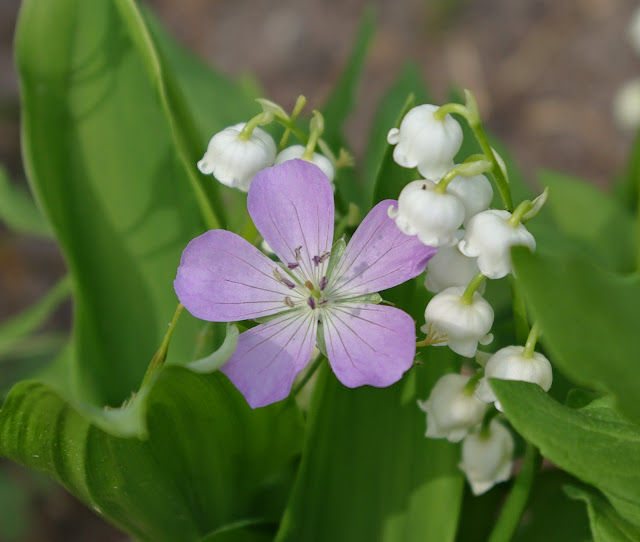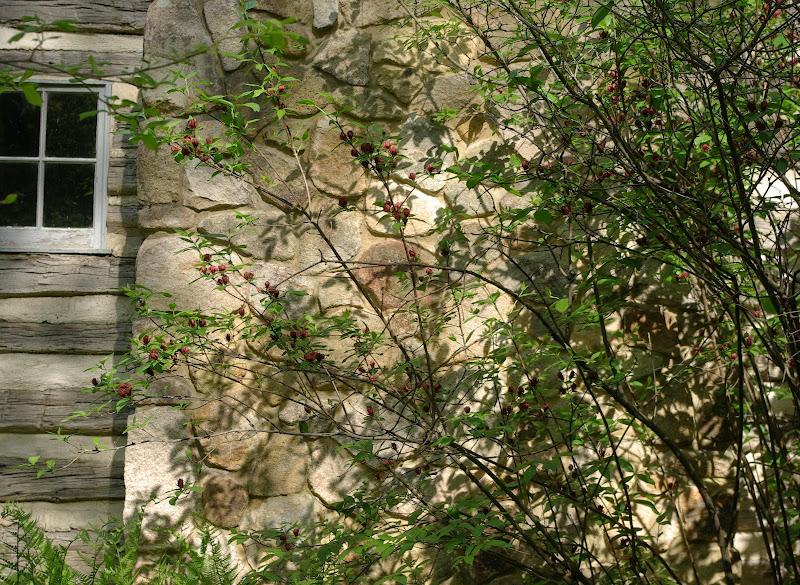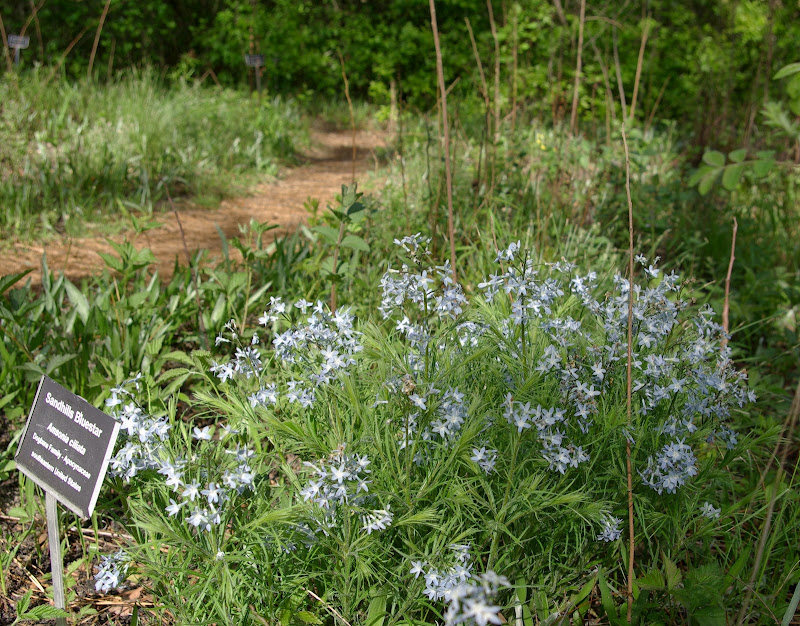Oy, I just remembered! Wildflower Wednesday! Since this post is a look back at the NC Botanical Garden in the spring of last year, I figured why not join in, even if this post is (very) late.
The layout of the NC Botanical Garden has changed quite a bit with the addition of the big new education center, but one still enters the garden through the metal sculpture cattail gate. On the left is the Coastal region garden and the Totten Center, and to the right the herb and medicinal garden.
Fringe tree and Southern Wood Fern in front of the herbal garden. I love this fern and don't know why it's not in my garden. It's a magnificent fern. * All pictures are from April 2013 unless otherwise noted. *
Fothergilla in one of the central beds between the Totten Center and the herb Garden, not quite in bloom. I think one of the reasons I haven't bought a fothergilla yet (or, to be totally honest, bought another one after killing the first) is they look a little odd in bloom to me, even more odd when they aren't all the way open. I should just forget about that and concentrate on how they look in summer and fall, and also better appreciate how they look in the spring.
Next to the Totten Center there is a swath of Woodland Phlox and
Yellowroot with a mix of other perennials and native grasses.

Yellowroot with a mix of other perennials and native grasses.

Most of the phlox is a cool pale blue while some are almost purple. I want to know how their wild grasses look so charming and graceful while mine just look like weeds. I need to order some of their woodland grass seeds next month when their list comes out. The seedheads below look a little like Eragrostis and they have offered E. spectabilis seeds in the past, but their lists says that blooms in the summer and likes a hot dry sunny habitat.
Picture from August 2011.
This is Large Cranberry (Oxycoccus macrocarpon), the species
grown commercially for holiday cranberries and cranberry juice.

This is Large Cranberry (Oxycoccus macrocarpon), the species
grown commercially for holiday cranberries and cranberry juice.

The adjacent Piedmont garden is a little quiet in spring,
but there is a beautiful spread of Woodland Phlox

but there is a beautiful spread of Woodland Phlox

some Baptisias, and American Wisteria. American Wisteria has beautiful color
and is quite unique-looking, but it's probably a good idea to check the fragrance
before buying one. My experience has been anywhere from no fragrance to male cat.

and is quite unique-looking, but it's probably a good idea to check the fragrance
before buying one. My experience has been anywhere from no fragrance to male cat.

The mountain section of the garden is alive with color in the spring.
Either Piedmont azaleas or Pinxterflower azaleas, and I must look for a name tag for the fern or ask about it next time I'm there. It's so frothy and lacy -- and gorgeous.
There are lots of Cinnamon Fern on the farm, but not in the garden, so
I find them in out of the way places in the woods when I am looking
for other things. They look beautiful in Chapel Hill with the azaleas.

I find them in out of the way places in the woods when I am looking
for other things. They look beautiful in Chapel Hill with the azaleas.

One day, I am going to get one of these white wild
geraniums, and even if they don't live long it will be worth it.

geraniums, and even if they don't live long it will be worth it.

Check out this beautiful Mountain Laurel. One of these grew successfully
in my parents' yard and they killed lots of things, so I should try it too.

in my parents' yard and they killed lots of things, so I should try it too.

The coastal section of the display gardens has many interesting things in the spring too, including another laurel.
I need to add this species to my garden. The softness of the
flower color and foliage is unique and I think very lovely.

flower color and foliage is unique and I think very lovely.

I am always happy to see the Birdsfoot Violet in bloom.
Probably the loveliest violet of them all, it needs practically
sterile sand and open space to thrive. Periodic burning helps.

Probably the loveliest violet of them all, it needs practically
sterile sand and open space to thrive. Periodic burning helps.

I don't think I will ever tire of coming to this garden to see (far more) mature specimens of species I grow, to see species that I can't or someday want to grow in my garden, and to get fresh ideas about using native plants.



























































